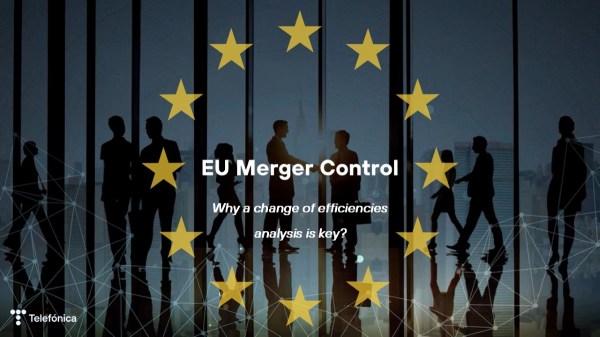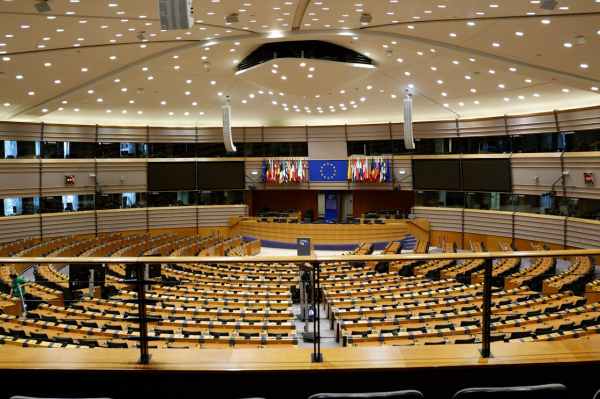Since February 2020, when the European Commission published the document “Shaping Europe’s digital future“, European authorities’ efforts to adapt European regulations to the current technological reality are starting to yield results. We are on the way to defining the rules that will allow Europeans to enjoy a secure and reliable digital space.
In recent years, digital platforms have accumulated unprecedented economic power, and their influence on society is unquestionable. The benefits offered by these players are evident, however, since the adoption of the E-Commerce Directive more than two decades ago, technology and digital markets have changed substantially, outlining the urgent need to update and modernize the legal framework for their regulation.
In this regard, the European Commission, the Council, and the European Parliament are currently trying to agree on the final text of the Digital Services Act, aiming to finalize it before the end of the French Presidency of the Council in June this year.
This regulation could become one of the most relevant regulations of this new era. The debate on the Digital Services Act is a valuable opportunity to establish a horizontal framework for innovative digital markets that can be competitive, responsible, and fair. For the proposal to be a future-proof regulation there are some issues that must be considered.
Asymmetric obligations adapted to providers’ technical capacity
A famous superhero network expert once said that “With great power comes great responsibility“, and it is precisely players’ demand for responsibility in the digital environment the principle on which this ambitious regulation is based. Not all players in the digital ecosystem have the same repercussion on society and the economy. Digital services can be differentiated by the functions they provide, but also by the technical capacity they offer to interact with content, products, and services.
There are providers that have neither visibility nor control over the content that users host on their services, for example, cloud services. This technical inability translates into the impossibility of offering granularity in cases where it is necessary to remove illegal content to protect their users. It is therefore essential to consider the differentiation between those who can and cannot technically carry out takedown actions when demanding obligations from providers.
A one-size-fits-all approach imposing common rules on all digital services would make an effective take-down mechanism unfeasible while creating a disproportionate burden for many companies and services that would not be able to cope with the obligations imposed.
Therefore, the system of obligations eventually set by the Digital Services Act should clearly distinguish between intermediation services offering network infrastructure, hosting providers, online platforms, and Very Large Platforms (VLPs).
In order to avoid “all or nothing” proposals, at Telefónica we consider that the source closest to the illicit content, goods or services should assume greater responsibility for removal, as it has the technical capacity to proceed in a more selective manner.
User’s ability to choose
The Digital Services Act should be presented as the model for coexistence between digital service providers and their users. For this, transparency is the keystone to establish the necessary balance of rights and responsibilities among all agents involved in the digital environment with the aim of regaining lost trust.
Users must be able to manage and have control over their digital experience and the use of their data. To this end, they must be offered the ability to choose and additional information on the opportunities associated with data management and personal preferences. These reasons, defended since the launch of this initiative, contradict some specific proposals recently included among the amendments to the Digital Services Act.
In particular, the prohibition, by default, that service providers cannot request consent for the processing of personal data when the recipient of the service (i.e. the platform user) has opted out of receiving targeted advertising by automated means, may undermine users’ decision-making capacity. There are now tools that allow the user to make a more personalized choice of the advertising he/she would accept to receive in case he/she does not want to reject all of it by default. Moreover, this process makes it difficult to revoke the choice made by the user once they have accepted or refused their consent globally.
This again “all or nothing” approach limits the activity of third parties, such as centralized consent sites that help users to refine the self-management of their consents for each individual site, which would leave the ability to collect user consent exclusively in the hands of the large platforms. The result, besides limiting user choice, would reinforce their dominant position in the digital ecosystem.
A horizontal and efficient regulation that avoids duplicities
Duties and obligations’ definition is necessary for the Digital Services Act to be a useful and efficient regulation with realistic objectives. However, the provisions must be univocal and clear, avoiding disproportionate burden for intermediaries. To this end, it is necessary to eliminate the duplication of obligations for certain agents, such as Internet service providers, who are already subjected to identical or similar duties in other regulations, such as the Electronic Communications Regulation.
Horizontality must be another of the new Digital Service Act’s cross-cutting axes. The obligations to be included must be applicable and compatible with existing specific legislation on the different areas they address. This would avoid limiting the practical effectiveness of other regulatory and agreed texts, such as the Copyright Directive or the Regulation on combating the dissemination of terrorist content online. The situation is compromising. The lack of clarity and transversal applicability could lead to recurrent conflicts that will require the permanent intervention of the European Court of Justice.
There is still a long way to go
Although the general framework of the Digital Services Act is a good starting point for the fight against illegal online content, products and services, there is still a long way to go and some problems to be solved. This is the case of the establishment of specific deadlines for the rapid and effective removal of manifestly illegal content.
A clear system with strict deadlines for the removal of illegal content, such as the illegal retransmission of live sporting events, is also a useful way to ensure a competitive and safe digital environment. The case of retransmission of sporting events, which are currently not fully protected by European copyright law, is unsustainable for the audiovisual sector, which invests a large part of its annual budget in the acquisition of sports rights licenses. In this regard, the debate launched in the European Parliament on the “Fight against online piracy of live sports events” in May 2021 needs further development and efforts.
A collaborative governance model is needed in which different players in the digital ecosystem cooperate with a shared responsibility, according to the capabilities of each provider, to achieve secure and reliable digital services.










